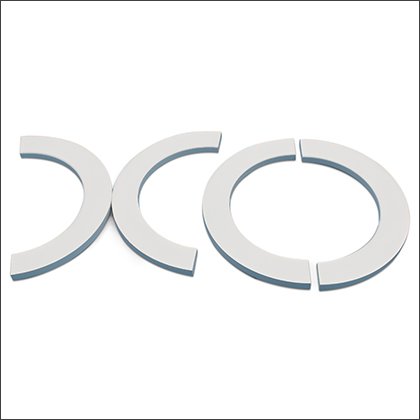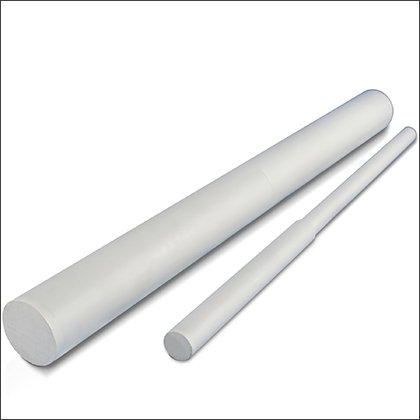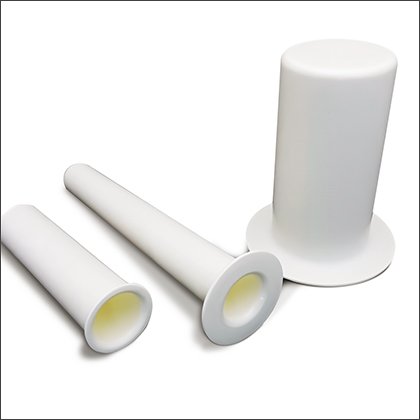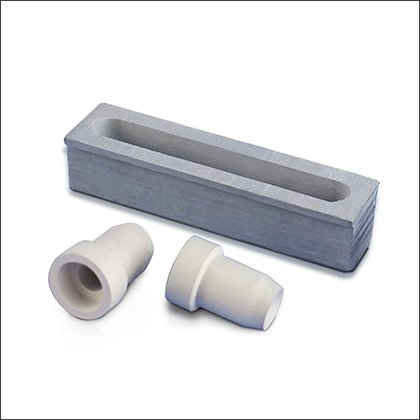Material Overview
Boron Nitride (BN) is a versatile, advanced ceramic material renowned for its exceptional thermal stability, electrical insulation, and chemical inertness. Available in hexagonal (h-BN) and cubic (c-BN) forms, it combines a unique combination of properties:
- Thermal Conductivity: Up to 30-75 W/mK, with low thermal expansion (2.5×10⁻⁶/°C), ideal for heat dissipation in high-power electronics.
- Chemical Resistance: Resists acids, alkalis, making it suitable for extreme environments.
- Electrical Insulation: Dielectric strength >30 kV/mm, critical for semiconductor and high-voltage applications.
Technical Data TableProperty h-BN BN Composite (30% SiO₂) Density (g/cm³) >2 >2.1 Flexural Strength (MPa) 30-150 66 Modulus of Elasticity (GPa) 30 40-74 Thermal Conductivity (W/m·K) 35-75 25 Max. service temperature (℃) 900 850 Dielectric Strength (kV/mm) 30-50 >40 The microstructure of solid boron nitride is similar to that of graphite, also known as “white graphite”, but the oxidation temperature of boron nitride is relatively higher. It has high thermal conductivity and good thermal shock resistance, and can be ground to precise tolerances. The most common product form is a boron nitride plate.
Key Features
- High-Temperature Stability: Operates continuously at 1,800°C in inert atmospheres, outperforming alumina and graphite.
- Low Friction Coefficient: Self-lubricating properties (μ ≈ 0.2–0.4) reduce wear in mechanical systems.
- Non-Toxic: Safer alternative to asbestos and beryllia in thermal management systems.
- Optical Transparency: Transmits infrared and microwave radiation, used in laser windows and radomes.
Applications
- Semiconductors: Wafer handling fixtures, crucibles for silicon/gallium nitride crystal growth.
- Aerospace: Thermal protection systems, radar-transparent radomes.
- Industrial: Molten metal containment, high-temperature furnace components.
- Electronics: Heat spreaders for LED and RF devices, dielectric layers in capacitors.
Manufacturing & Customization
- Hot Pressing: Produces dense BN ceramics (>95% purity) for critical applications.
- CNC /Grinding: For precise dimensional tolerance.
- Additive Manufacturing: 3D-printed BN composites samples for complex geometries in our supporting partners.
Boron nitride outperforms graphite due to its non-reactive nature and higher oxidation resistance (>900°C in air vs. 400°C for graphite). Unlike graphite, BN does not react with molten aluminum or steel, preventing contamination in metal casting. Its low thermal expansion (2.5×10⁻⁶/°C) ensures dimensional stability in thermal cycling, critical for semiconductor wafer fixtures.
h-BN’s high thermal conductivity and electrical insulation (>30 kV/mm) enable efficient heat dissipation in GaN-based RF amplifiers, reducing junction temperatures by 30%. Its atomically smooth surface minimizes interface defects in 2D transistors, improving electron mobility by 20% compared to SiO₂ substrates.
Boron nitride (BN) ceramics are relatively soft, close to graphite, making them easy to machine. They can be precisely machined into complex shapes using diamond tools or CNCs, and their edges are not prone to chipping. Their layered structure gives them self-lubricity, and no additional cooling is required during machining, but care must be taken to avoid delamination due to excessive cutting forces. The surface is smooth after machining, making them suitable for high-precision parts.
Yes, we support customized complex-shaped boron nitride (BN) ceramic parts. Through hot pressing, CNC precision machining, and other processes, we can produce special-shaped structures, thin-walled parts, or high-precision components. The processed BN ceramic parts are accurate in size and suitable for electronics, semiconductors, and high-temperature applications. You only need to provide drawings or samples, and we can evaluate the feasibility of the process.









